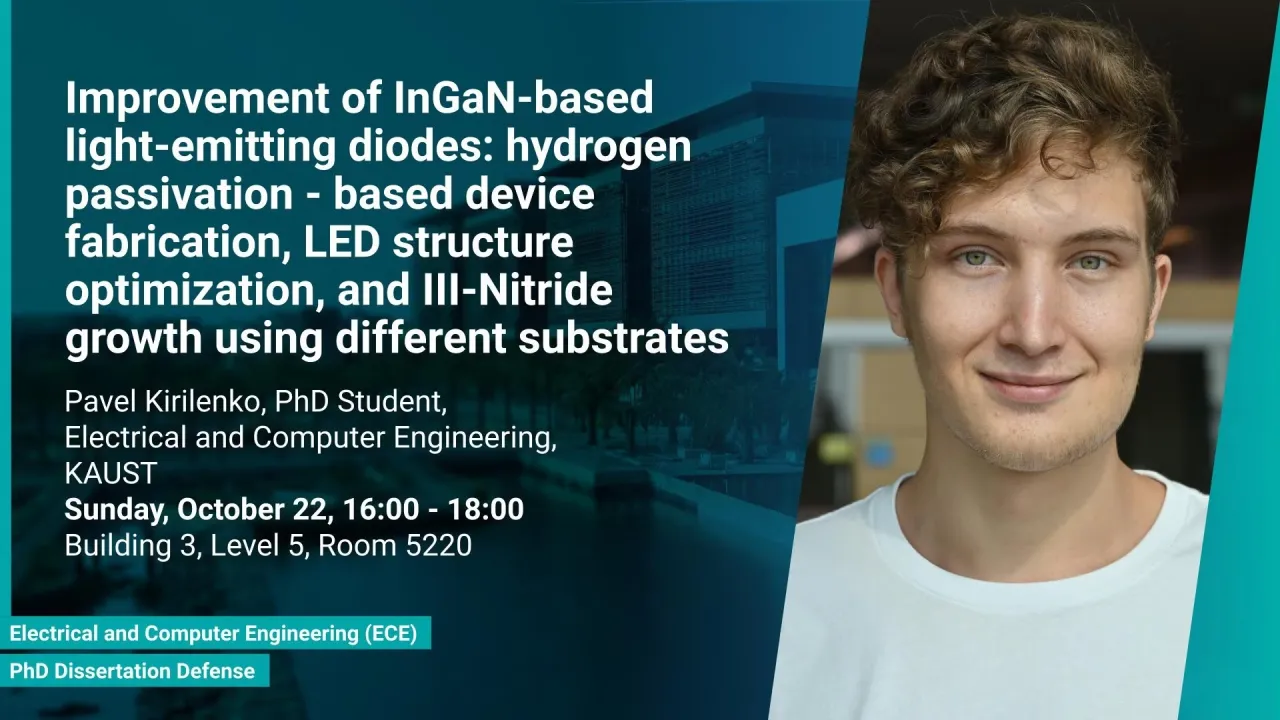
Improvement of InGaN-based light-emitting diodes: hydrogen passivation - based device fabrication, LED structure optimization, and III-Nitride growth using different substrates
III-Nitride materials have continuously attracted the attention of semiconductor researchers for the last decades. III-Nitrides are considered a key material for a wide range of applications, such as power electronics and color displays, and have proven to be suitable as an efficient light source. This work provides a multi-directional approach for realizing efficient InGaN Light-Emitting Diodes (LEDs).
Overview
Abstract
III-Nitride materials have continuously attracted the attention of semiconductor researchers for the last decades. III-Nitrides are considered a key material for a wide range of applications, such as power electronics and color displays, and have proven to be suitable as an efficient light source. This work provides a multi-directional approach for realizing efficient InGaN Light-Emitting Diodes (LEDs). Three main research directions are explored: fabrication of LED chips using hydrogen passivation, investigation and suppression of the additional short-wavelength emission, and consideration of different substrates for the InGaN LED growth. The study of hydrogen passivation technology is focused on the creation of resistive regions in Mg-doped p-GaN by hydrogen plasma. In the first case, passivation was directly applied to the sidewall of the micro-LED pixel. In the second case, passivation patterning was applied to the top surface of the standard-size LED. This allowed us to suppress current injection into the devices’ sidewall regions, reducing the non-radiative recombination. This led to an increase in LEDs’ peak External Quantum Efficiency (EQE), 2.6 and 1.2 times in the case of micro and standard-size LEDs, respectively. The investigation and suppression of a separated short-wavelength emission focuses on the color purity of red InGaN LEDs. The research establishes a defect-related nature of point-like separated emission and proposes a way to eliminate it. The implementation of a proposed solution results in the 621-nm-wavelength InGaN-based LED without additional point-like emission and with a remarkable EQE of 4.3%. The study of different substrates demonstrates low-forward voltage LED on the Ga2O3 substrate and high-quality InGaN layers grown on the cleaved ScAlMgO4 (SAM) substrate. It is expected to use the SAM-lattice-matching In0.18Ga0.82N templates for the following high-quality red quantum wells deposition. Using original substrate cleaving technology, we achieved N-polar InGaN with dislocation densities as low as 2.9 × 108 and 1.6 × 109 cm−2 in the case of screw-type and edge-type dislocations, respectively. Research results contribute to the development of InGaN-based LEDs, proposing solutions that can help to reduce device size and achieve higher efficiencies in red InGaN LEDs.
Brief Biography
Pavel Sergeyevich Kirilenko obtained his bachelor’s degree from Novosibirsk State University with a specialization in high-energy physics. Master’s degree was completed in a joint project of Novosibirsk State University and Budker Institute of Nuclear Physics. The focus of the Master’s research was to design and manufacture a series of scintillator-based muon detectors for the astrophysical experiment TAIGA. Pavel joined the KAUST Ph.D. program in 2018, investigating the ways of III-nitride-based light sources improvement.

